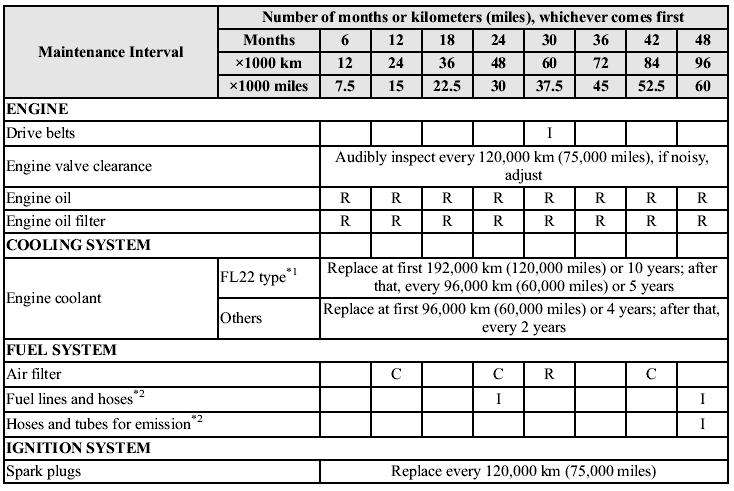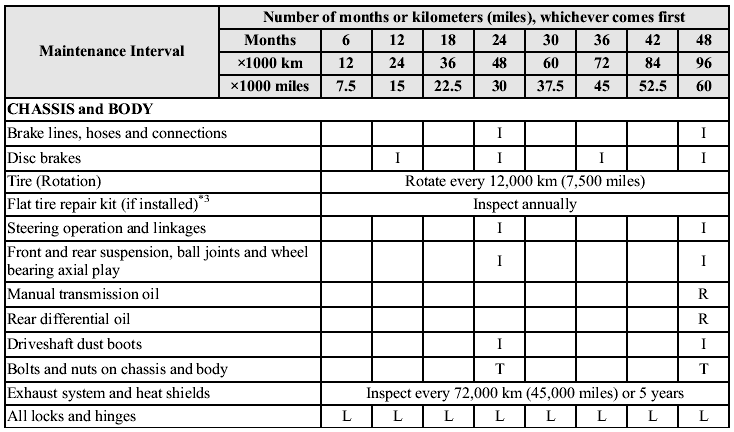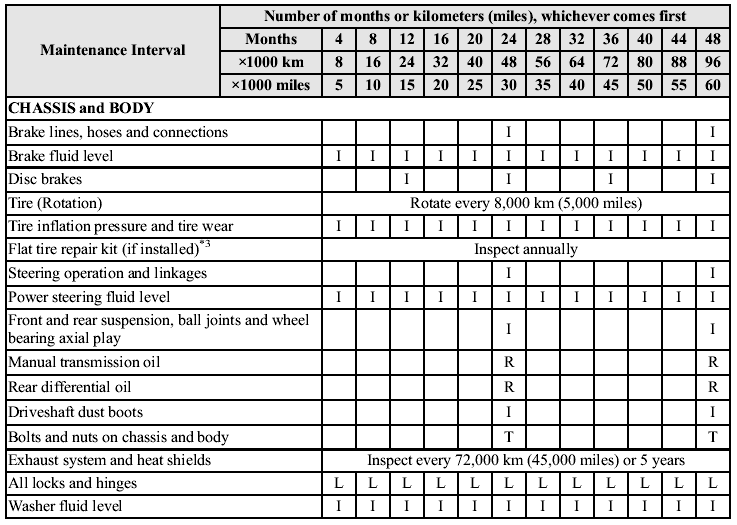Scheduled Maintenance (USA, Canada, and Puerto Rico)
Follow Schedule 1 if the vehicle is operated mainly where none of the
following conditions
apply.
- Repeated short-distance driving - Driving in dusty conditions - Driving with extended use of brakes - Driving in areas where salt or other corrosive materials are used - Driving on rough or muddy roads - Extended periods of idling or low-speed operation - Driving for long periods in cold temperatures or extremely humid climates - Driving in extremely hot conditions - Driving in mountainous conditions continually If any do apply, follow Schedule 2 (Canada and Puerto Rico residents follow Schedule 2).
NOTE:
After the prescribed period, continue to follow the described maintenance at the
recommended
intervals.

Schedule 1

Chart symbols:
I: Inspect: Inspect and clean, repair, adjust, fill up, or replace if necessary.
R: Replace
C: Clean
L: Lubricate
T: Tighten
Remarks:
*1 Use FL22 type coolant in vehicles with the inscription УFL22Ф on the radiator cap itself or the surrounding area. Use FL22 when replacing the coolant.
*2 According to state/provincial and federal regulations, failure to perform maintenance on these items will not void your emissions warranties. However, Mazda recommends that all maintenance services be performed at the recommended time or mileage/kilometer period to ensure long-term reliability.
*3 Check the tire repair fluid expiration date every year when performing the periodic maintenance. Replace the tire repair fluid bottle with new one before the expiration date.


See also:
Interior Comfort
Use of various features for drive comfort, including air-conditioning and
audio
system. ...
Parking in an Emergency
The hazard warning lights should always
be used when you stop on or near a
roadway in an emergency.
The hazard warning lights warn other
drivers that your vehicle is a traffic hazard
and that t ...
Limitations to SRS Air Bag
In severe collisions such as those described previously in УSRS Air Bag
Deployment
CriteriaФ, the applicable SRS air bag equipment will deploy. However, in some
accidents,
the equipment may not ...


